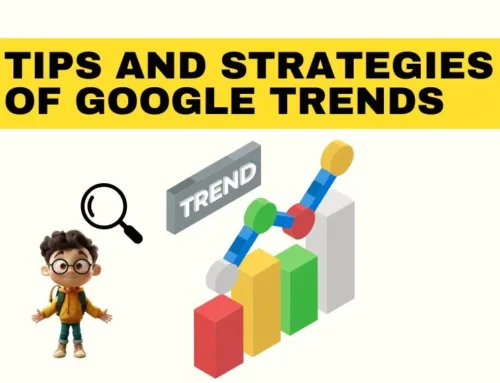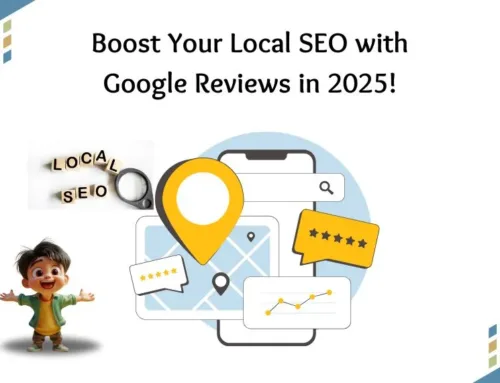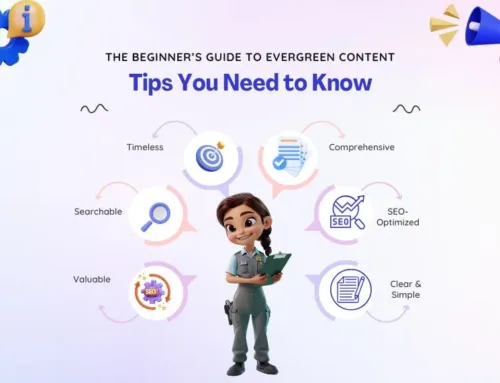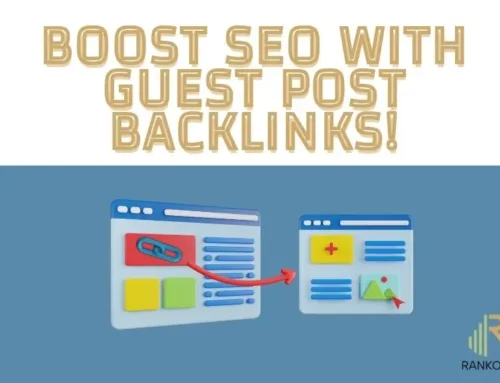In today’s fast-paced digital world, people are searching for local businesses on the go, often turning to “near me” searches to find what they need nearby—whether it’s a coffee shop, dentist, or plumber. These types of searches have surged in popularity, especially on mobile devices, making near me SEO optimization essential for any business looking to attract local customers. When a potential customer searches for a service or product close to their location, they’re usually ready to make a quick decision, which makes appearing in these search results incredibly valuable for local businesses. That’s why understanding how to Optimize for Near Me Searches has become crucial for staying competitive in local markets.
This blog will dive into how to optimize for near me searches, covering everything from setting up Google My Business for enhanced local visibility to using geo-targeted keywords that can help businesses connect with nearby customers. We’ll also explore practical tips, case studies, and the rising demand for near me SEO optimization to give you a complete guide for reaching local customers when it matters most. Whether you’re a small business or a growing enterprise, these steps can help you stay in local search visibility and turn online queries into foot traffic and sales.
Table of Content
What are “Near Me” searches in Local SEO?
In Local SEO, “Near Me” searches are when people look for something nearby by adding “near me” in their search query. For example, if someone searches for “coffee shops near me” or “dentist near me,” they’re looking for a place close to their current location. These searches have become popular because people often want quick results for things close by, especially when using smartphones.
Local businesses use “Near Me” searches to make sure their information shows up when people search for their type of service or product nearby. To rank well in these searches, businesses focus on having accurate location details, such as addresses, phone numbers, and business hours, on their website and in their online listings like Google My Business. This helps search engines show their business to nearby customers.
Why optimizing for “Near Me” searches in Local SEO is important

Optimizing for “Near Me” searches is important in Local SEO because it helps local businesses show up when nearby customers are looking for what they offer. When people search for things like “pizza near me” or “plumber near me,” they’re usually ready to make a decision quickly. Being visible in these searches can bring more customers to a business.
By optimizing for “Near Me” searches, businesses can attract people who are close by, which increases the chances they will visit the store, restaurant, or office. To do this, businesses make sure their location details are accurate on search engines and maps, and they also gather positive reviews, which helps them rank higher. This way, when someone in the area searches for a service or product, that business is more likely to be seen and chosen.
Rising Demand for Near Me Search Optimization
The demand for “Near Me” Search optimization has been rising rapidly. This is because more people are using their smartphones to search for local businesses while on the go. Here are some key stats that show how important “Near Me” searches have become:
- Growing Popularity: Searches for phrases like “near me” have increased by over 500% in recent years. This shows that people want quick, nearby options more than ever before.
- Mobile Searches: About 80% of “Near Me” searches are done on mobile devices. This is because people often search for nearby places while they are out and need fast answers.
- Intent to Visit: Around 76% of people who do a local search on their phone visit a nearby business within a day. So, “Near Me” searches often lead to real visits and purchases, making them valuable for businesses.
These stats highlight why optimizing for “Near Me” is important in Local SEO. When businesses show up in these searches, they can attract more local customers and increase their sales.
How does “Near Me” work in Google?

“Near Me” searches on Google work by using the location of the person doing the search. When someone types “near me” along with a product or service (like “restaurants near me” or “doctor near me”), Google looks at their current location to find the best options close by.
Here’s how it works in simple steps:
- Detecting Location: Google uses information like GPS on smartphones, Wi-Fi connections, or the IP address on a computer to know where the user is located.
- Finding Relevant Businesses: Google then looks for businesses in that area that match what the person is searching for. It checks for keywords (like “restaurant” or “doctor”) and location details that businesses have added to their websites or Google My Business listings.
- Showing the Results: Google shows a list of nearby businesses on the search results page or in Google Maps. The top results usually have the best location information, high ratings, and positive reviews, which makes them more likely to be chosen by searchers.
So, when businesses optimize their websites and Google listings for location-based keywords, they have a better chance of appearing in “Near Me” results and reaching local customers.
Local search intent for ‘near me’ keywords
Local search intent for “near me” keywords means that people are looking for something close to where they are. When someone searches for “pizza near me” or “gym near me,” it shows they want to find a place nearby to visit soon.
These types of searches are important for businesses because the person searching is usually ready to visit or buy. For example, if someone searches for a “pharmacy near me,” they might be looking for medicine and want to go there quickly.
To show up in these searches, businesses make sure their location, hours, and reviews are correct online, so Google knows to show them to nearby people looking for what they offer.
‘Near Me’ Searches Statistics
Here are some clear statistics about “near me” searches:
- Huge Growth in Searches: Over the past few years, “near me” searches have increased by over 500%. This shows that people are using these searches more often to find local businesses.
- Mobile Focus: Around 82% of “near me” searches are done on mobile phones. This means most people are searching for nearby places while they are on the go.
- Purchase Intent: Nearly 80% of “near me” searches result in a store visit within a day, and around 28% of those visits lead to a purchase. This shows that people searching for “near me” are very likely to buy something soon.
- High Impact for Local Businesses: About 46% of all Google searches have a local intent, meaning people are looking for local information or places to visit nearby. This makes “near me” searches very important for local businesses to attract customers.
These statistics highlight the value of “near me” searches for local businesses and show how much people rely on them to find nearby services and stores.
How to Optimize for Near Me Searches
Here’s how to optimize for near me searches to help your business show up when people search for things nearby:
1. Understanding “Near Me” Search Queries
When people search for something nearby, like “coffee shop near me,” they’re looking for local businesses they can reach quickly. Understanding these types of searches can help you attract more local customers.
2. Keyword Research for “Near Me” Searches
Look for keywords related to your business and location, like “dentist near me” or “bakery in [city].” Use these keywords on your website to help search engines connect your business to local search visibility.
3. Creating a Google My Business Page for Local SEO
Google My Business is a free tool that lets you create a profile for your business. This profile includes your location, hours, contact details, and photos, making it easier for local customers to find you online.
4. Optimize Google My Business for Local “Near Me” Searches
Make sure your Google My Business profile is complete and accurate. Add your address, phone number, website, hours, and details like photos and services. This helps you show up higher in “near me” search results.
5. Local SEO on Mobile Devices
Since most “near me” searches happen on phones, it’s essential that your website is mobile-friendly. A mobile-friendly website loads quickly and is easy to use on a phone.
6. SEO for Voice Search “Near Me”
With voice search, people often ask questions like, “Where’s the nearest pizza place?” Include natural-sounding phrases and questions in your website’s content, like “Where can I find the best pizza in [city]?”
7. Local Citations and Listings
Local citations are mentions of your business on other websites, like local directories or review sites. Make sure your name, address, and phone number are consistent across all listings to improve your chances in local search visibility.
8. Encouraging Customer Reviews and Ratings
Ask satisfied customers to leave a review on Google or other review sites. Positive reviews improve your online reputation and can help you rank higher in local search visibility.
9. Optimizing Your Website for Local Search Visibility
Add your location keywords to important areas of your website, like the homepage, contact page, and product or service pages. This tells search engines that your business serves local customers.
10. Geo-targeting Your Content for “Near Me” Search Results
Create blog posts or web pages that mention specific local areas or neighborhoods. This is helpful for targeting people searching within those areas.
11. Using Geo-targeted Social Media Ads
Social media ads can be set to target people in certain locations. Use this to reach people near your business by running ads on platforms like Facebook or Instagram that are targeted to your area.
12. Local SEO Analytics and Reporting
Track your local SEO efforts using tools like Google Analytics. This helps you see how much local traffic you’re getting and what’s working to attract nearby customers.
Following these tips can help you appear more often in “near me” searches and attract more local customers.
How to Attract “Near Me” Customers

To really grab the attention of local, “near me” customers, start by making sure they can easily find you on Google Maps. Update your Google My Business profile with key details—like your exact address, hours, and phone number—and include inviting photos that show off your space. Think of it as creating a virtual “open door” for anyone nearby.
When writing for your website, weave in references to your location naturally. For example, if you own a coffee shop near a popular park, mention it! Phrases like “cozy coffee spot near [landmark]” or “serving fresh pastries in [neighborhood]” make it clear that you’re close by, and they help search engines match you with local search visibility.
Encourage your satisfied customers to leave positive reviews; these can work wonders in building trust. People nearby are more likely to choose you if they see glowing feedback from others in the area. Also, stay active on social media with local-focused posts—think special promotions, photos of new items, or even updates on local events you’re involved in. This keeps your name in people’s minds and makes you feel like part of the neighborhood.
Lastly, since most “near me” searches happen on mobile, make sure your website is easy to use on phones. A simple, mobile-friendly website gives your local customers a smooth experience, making them more likely to stop by. With these steps, you’ll attract more local customers and make a strong impression on your community.
Practical tips to boost your Local SEO Near Me SEO Optimization
Here are some practical tips to help boost your local SEO Near Me search optimization and make it easier for local customers to find you:
Use Location-Specific Keywords: Include your city or area name in the words you use on your site so search engines know where you’re located.
Highlight Location-Specific Keywords on Key Pages: Use your location keywords on important pages like the homepage, contact page, and services page.
Add Your Location to Title Tags, Meta Descriptions, and Headers: Include your location in titles, descriptions, and headers to make it clear where you are based.
Embed a Google Map on Your Contact or Location Page: Adding a Google Map makes it easy for customers to find you and helps search engines recognize your location.
Implement Local Schema Markup: Schema markup is a way to help search engines understand your location and other important details. It can improve your local search visibility results.
Write Content That Engages Local Customers: Create content that appeals to people in your area. Talk about local events, news, or topics that matter to your community.
Publish Locally Relevant Content, Blogs, or News Articles: Sharing local news, events, or guides can attract nearby customers and improve your local ranking.
Include High-Quality Local Images and Videos: Add photos or videos of your location, staff, or community to make your website feel personal and relevant to local users.
Keep Consistent NAP (Name, Address, Phone): Ensure that your name, address, and phone number are the same across all online listings, such as Google, Yelp, and social media.
Engage with Customers on Social Media: Regularly post updates about your business and interact with local customers on social media.
Update Your Content Regularly: Keep your website content fresh by regularly adding new information, updates, or blog posts about your business and community.
Following these tips will strengthen your Local SEO, helping more local customers find your business in “near me” searches.
Tools to Monitor and Measure Your Local SEO Success
Here are some easy-to-use tools to help you track and improve your local SEO success:
| Tool | Description |
| Google My Business Insights | Shows how people find your business on Google, including searches, views, and customer actions (like calls). |
| Google Analytics | Tracks where website visitors come from and which pages they visit. Great for seeing if local customers find you. |
| Google Search Console | Monitors how often your site appears in searches and which keywords bring in traffic, including local ones. |
| Moz Local | Helps keep your business name, address, and phone number consistent across online directories. |
| BrightLocal | Tracks your local search rankings, and reviews, and compares your SEO with competitors. |
| Yext | Ensures your business info is accurate across directories and tracks your local search visibility. |
| Whitespark | Tracks local rankings, manages reviews, and finds local citation opportunities for better local SEO. |
Using these tools regularly will help you see what’s working, where you can improve, and how to keep attracting local customers.
Improve local rankings for ‘near me’ queries
To improve your local rankings, consider using specific “near me” queries throughout your website content, blog posts, and even in your Google My Business profile. This strategy helps attract local customers who are searching for services in your area. Here are some examples:
- Include phrases like “best [service] near me” or “top [product] near me” to capture attention from people looking for recommendations.
- Use “where to find [service/product] near me” or “closest [business type] near me” in FAQ sections or in descriptions on your location and service pages.
- If you’re targeting a specific area, add details such as “affordable [service] near [neighborhood or landmark]” or “popular [service] near [city center or street name]” to make it clear where you’re located.
- To reach customers who may be visiting, phrases like “must-visit [business type] near me” or “recommended [service] near [local attraction]” can drive more traffic.
- Lastly, consider long-tail variations like “highly-rated [business type] near me” or “trusted [service] providers near [specific area]” for people searching with intent to buy or visit.
Using these “near me” queries naturally within your content will improve your visibility in local search results and help connect you with more nearby customers.
Case studies and examples
Here are some case studies and examples to show how businesses have successfully used “near me” searches to improve their local rankings and attract more customers:
- Local Restaurant Boosts Dinner Reservations
A local restaurant wanted to attract more dinner reservations from nearby customers. By optimizing their Google My Business profile with keywords like “best dinner spots near me” and “restaurants near [popular neighborhood]”, they saw an increase in search traffic. Additionally, they updated their website with blog posts such as “Top Places for Dinner Near Me” and “Family-Friendly Restaurants Near [City Center]”. This helped them rank higher in “near me” searches and drove more local customers to their website and reservation system. - Beauty Salon Gains New Clients from “Near Me” Searches
A beauty salon found that potential clients were searching for terms like “hair salon near me” or “top-rated spa near [local area]”. They optimized their site and social media by using these keywords in their service pages and posts. They also added specific phrases like “affordable salon near [popular street]” in their Google My Business profile. Within a few months, they noticed a spike in calls and new appointments coming from local searches, helping them grow their client base. - Plumber Increases Emergency Service Calls
An emergency plumbing service saw an opportunity with “near me” searches. They added phrases like “emergency plumber near me” and “24-hour plumber near [neighborhood]” to their website and business profile. When people nearby searched for urgent plumbing help, the plumber’s business appeared at the top. This change resulted in more calls for emergency services, especially at night and on weekends. - Pet Store Drives Foot Traffic with Location-Specific Keywords
A pet store wanted to bring more pet owners into their shop. They started using keywords like “pet supplies near me” and “pet store near [landmark or neighborhood]” on their website, in blog posts, and in their Google My Business profile. They also shared posts like “Where to Find High-Quality Pet Food Near Me” on social media. As a result, the store noticed an increase in in-store visitors who found them through these local searches. - Fitness Studio Grows Memberships with “Near Me” Content
A fitness studio looking to boost memberships used terms like “fitness classes near me” and “yoga studio near [neighborhood]” on their website and social channels. They also published articles such as “Finding the Right Gym Near Me for Beginners”. These changes helped the studio appear more often in “near me” searches and attracted people who lived or worked nearby, leading to more memberships and class sign-ups.
These examples show how businesses can use “near me” searches to attract local customers and grow their client base. By adding location-specific keywords to online profiles, websites, and social media, businesses can rank higher in local search results and drive more foot traffic, calls, and online visits.
Avoid These Local SEO Mistakes in “near me” Searches
Here are some common mistakes to avoid when trying to improve your “near me” search rankings for local SEO:
- Ignoring Google My Business Updates
Not updating your Google My Business profile can hurt your local visibility. Make sure all information, like your hours, address, and phone number, is correct. Outdated details make it harder for nearby customers to find and trust you. - Using Incorrect Location Information
Consistency is key in local SEO. If your business name, address, or phone number (NAP) is different across directories (like Yelp, Facebook, or local listings), it can confuse search engines and harm your ranking. Keep your location details consistent everywhere. - Missing Location Keywords in Content
Failing to include location-specific keywords, like “near me” or your city name, in your website content and meta descriptions can make it harder for local customers to find you. Use phrases like “best [service] near me” or “[business type] in [city name]” naturally within your content. - Not Asking for Customer Reviews
Reviews help build trust and boost your local rankings. If you’re not encouraging happy customers to leave reviews on platforms like Google, you’re missing an opportunity to improve visibility in “near me” searches. - Skipping Local Backlinks
Backlinks from other local businesses and websites strengthen your local presence. Ignoring local partnerships or backlinks from nearby businesses means you’re missing out on a key factor for local rankings. - Ignoring Mobile Optimization
Many “near me” searches are done on phones. If your website isn’t mobile-friendly, it may load slowly or look hard to navigate on small screens, which can turn potential customers away. - Forgetting Local Schema Markup
Local schema markup is a bit of code that tells search engines your location and other important business details. Not using schema markup can make it harder for Google to understand your local relevance. - Posting Irrelevant Content
Creating content that doesn’t speak to local customers won’t help you rank in “near me” searches. Focus on topics relevant to your area, such as “tips from [city]” or “services near [landmark]” to attract local visitors. - Not Tracking Your Local SEO Performance
If you don’t track your progress, you won’t know what’s working. Use tools like Google Analytics or Google My Business Insights to see how well your local SEO efforts are performing and make adjustments as needed.
Avoiding these mistakes will help improve your local SEO and increase your chances of appearing in “near me” searches, making it easier for local customers to find you.
Conclusion
How to Optimize for Near Me searches in Local SEO is an invaluable strategy for local businesses aiming to connect with nearby customers who are ready to visit or make a purchase. By understanding how “Near Me” searches work and prioritizing steps like Google My Business optimization, mobile readiness, customer reviews, and location-specific keywords, your business can rank higher in these searches and attract more local traffic. As the demand for local search convenience continues to rise, ensuring your business is visible in these results can give you a competitive edge in your community.
To stay ahead, remember to monitor and refine your local SEO efforts with tools like Google My Business Insights, local search analytics, and feedback from customer interactions. By continually optimizing for local visibility, you’ll not only attract more “Near Me” customers but also establish your business as a go-to option in your area.
Ready to boost your local presence? Start implementing these tactics today and let Rankonix help you make the most of your Local SEO strategy.
FAQs
Q. How do I show up in searches “near me”?
To appear in “near me” searches, start by claiming and verifying your Google Business Profile (GBP). Ensure your business information, including name, address, phone number (NAP), and hours, is accurate and up-to-date. Use location-specific keywords in your website content and business description, such as “best coffee near me.” Positive customer reviews also play a significant role, so encourage satisfied customers to leave feedback. Additionally, build relationships with local websites to gain backlinks, which can improve your local search visibility results.
Q. How to rank on the “near me” keyword?
Ranking for “near me” searches requires a few key strategies. Use location-based keywords like “best pizza near me” throughout your content. Geo-tagging your posts and images can also boost relevance. Make sure your GBP is fully optimized with updated categories, photos, and reviews. Encourage happy customers to leave reviews mentioning “near me” to further improve your ranking. Additionally, ensure your website is mobile-friendly, as many “near me” searches come from smartphones.
Q. How to boost local search visibility?
Boosting local search visibility starts with optimizing for local SEO. Use structured data markup on your website to help search engines understand your location and services. Regularly update your GBP with posts, promotions, and photos to stay active and relevant. Encourage reviews to build credibility and include your business in local directories like Yelp and Bing Places. Creating location-specific content, such as blogs about local events, can also increase your visibility.
Q. How do I make my business searchable on Google?
Making your business searchable on Google requires optimizing both your website and GBP. Use location-specific keywords in your site’s content and ensure it is mobile-friendly. List your business in directories like Google, Yelp, and TripAdvisor to increase your online presence. Building local backlinks from community websites can improve credibility, and regularly updating your profile with fresh content, photos, and posts keeps your business active in Google’s eyes.
Q. How to appear in “Near Me” searches on Google?
To appear in “near me” searches, improve your GBP by adding photos, services, and a well-written description optimized with location-specific keywords. Ensure your NAP details are consistent across all platforms to avoid confusion. Gain local reviews that mention your business and services, and use location-based keywords like “restaurant near me” in your content. Make sure your business is accurately pinned on Google Maps so potential customers can easily find you.










Leave A Comment